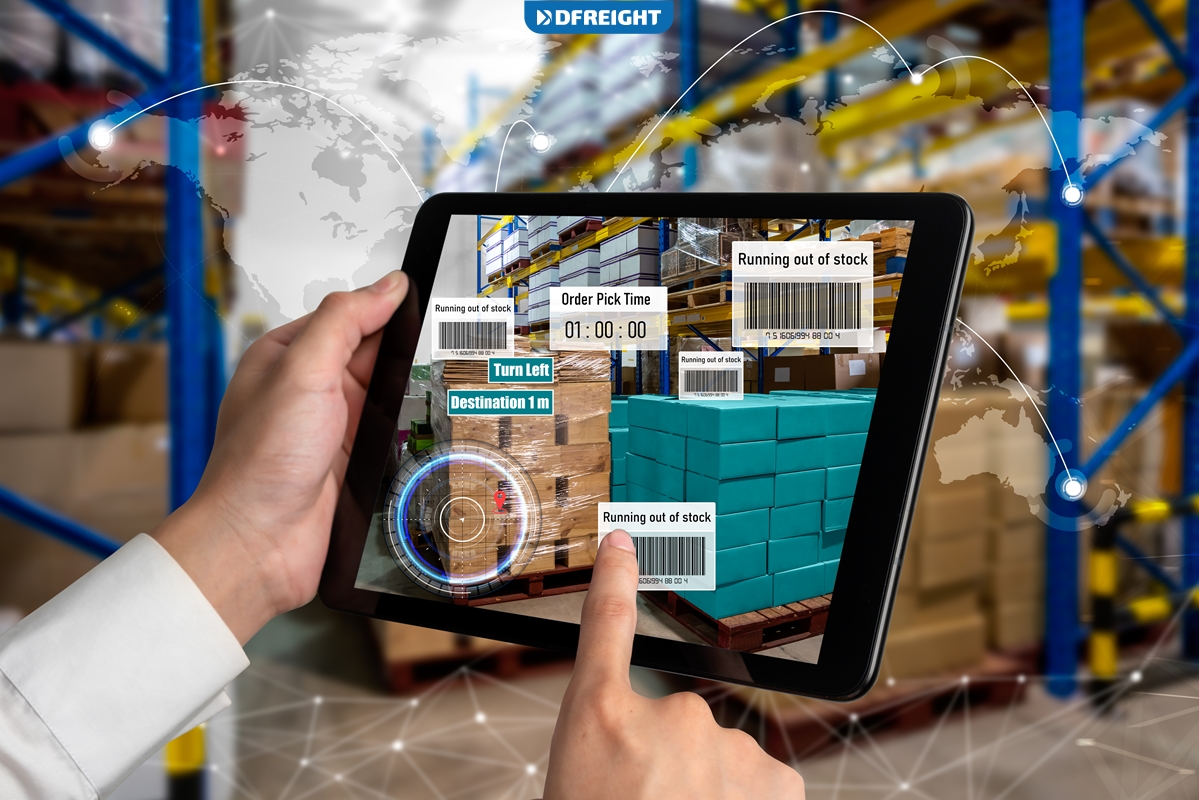Augmented Reality (AR) is revolutionizing the way logistics companies do business. AR can transform the logistics industry from tracking shipments to providing real-time updates. By leveraging AR’s power, logistics companies can now increase efficiency and improve customer experiences. Read on to learn more about how AR revolutionizes logistics companies’ operations and what this could mean for the industry’s future.
Table of Contents
What is Augmented Reality?
Augmented Reality (AR) is a technology that superimposes digital information onto a user’s view of the real world. It differs from Virtual Reality (VR), which completely immerses the user in a computer-generated environment.
AR can be experienced through various devices and applications, including smartphones, tablets, cameras, and wearable devices. It can be used to create immersive, interactive experiences that allow users to interact with virtual objects in the real world. For example, an AR app on a smartphone might display navigation directions, highlight points of interest in a city, or provide information about a museum exhibit.
In addition to enhancing existing applications, AR is used to create new experiences. For example, it can be used to create interactive games, virtual tours, and interactive shopping experiences. It can also be used in education, allowing students to learn more about a subject by bringing it to life.
As technology advances, it is becoming more accessible and affordable to a broader range of businesses. This opens up new possibilities for companies using AR to improve their operations and customer experiences.

Benefits of Augmented Reality in Logistics
Augmented Reality (AR) has the potential to revolutionize the logistics industry. By merging digital and physical worlds, AR enables logistics operators to gain real-time insights into their operations, boosting efficiency and accuracy. Here are some of the key benefits of AR in logistics:
- Improved Productivity: AR-powered wearable devices, such as smart glasses, can provide logistics staff instant access to data and instructions. This, in turn, reduces the time spent on tasks and enables workers to complete orders faster. AR also offers the ability to automate specific tasks, such as order picking, which can further enhance productivity.
- Enhanced Security: AR can be used to improve security in the logistics process. For example, AR-enabled devices can track and monitor shipments, ensuring they are delivered safely and securely.
- Improved Visibility: AR can provide real-time data and insights into the logistics process, enabling operators to identify and resolve any issues quickly. This, in turn, helps to reduce delays and improve customer satisfaction.
Overall, AR technology has the potential to revolutionize the logistics industry, providing operators with the tools to enhance efficiency, security, and visibility. With the right implementation, AR can significantly impact the logistics process and help operators take their operations to the next level.
How Can Companies Harness the Power of Augmented Reality in Logistics?
Augmented Reality (AR) has the potential to revolutionize the logistics industry. AR technology can be used to improve the efficiency and accuracy of operations, and to provide better customer experiences.
Companies can use AR to streamline their inventory management, maintenance and repair processes, training, and warehouse optimization.

Augmented Reality for Inventory Management
AR can be used to improve the accuracy of inventory tracking and reduce the time and resources spent on manual inventory management. For example, an AR app can be used to quickly scan and track the location of products in a warehouse, making it easier to locate items, plan routes, and keep track of stock levels.
Augmented Reality for Maintenance
AR can be used to provide remote assistance to technicians in the field. AR can be used to provide real-time guidance and troubleshooting for maintenance and repair tasks. This can reduce the time and resources needed to complete tasks, and can improve the safety and accuracy of the maintenance process.
Augmented Reality for Training
AR can be used to provide a more immersive experience for training new employees. AR-based simulations can be used to provide a realistic experience for training new employees on safety protocols, operating procedures, and more.
Augmented Reality for Warehouse Optimization
AR can be used to optimize the layout and workflow of warehouses. AR-enabled devices can be used to collect data on how the warehouse is being used, and can be used to identify areas of improvement and suggest changes in layout. This can improve the efficiency and accuracy of operations, and can reduce the amount of time and resources spent on manual processes.
As the technology continues to advance, AR has the potential to become an even more powerful tool for companies in the logistics industry. With the right applications and strategies, companies can harness the power of AR to improve their operations and customer experiences.
Implementing Augmented Reality in Logistics
Implementing Augmented Reality (AR) in logistics requires careful planning and execution. AR technology is still relatively new and can be difficult to implement correctly. Here are some steps to consider when implementing AR in logistics:
- Create an AR Infrastructure: The first step is to create an AR-enabled infrastructure. This includes deploying the necessary hardware, such as smart glasses and tablets, and software, such as AR-enabled apps, to enable the use of AR in logistics.
- Integrate AR Technology into Logistics Processes: Once the necessary infrastructure is in place, the next step is to integrate AR technology into logistics processes. This could include using AR to track and monitor shipments, as well as providing workers with real-time data and instructions.
- Train Staff: To ensure that staff are comfortable using AR-enabled devices and applications, it is important to provide them with the necessary training. This could include providing staff with tutorials, demonstrations, and practice sessions.
By taking these steps, logistics operators can ensure that they are able to successfully implement AR technology into their operations. This, in turn, can help them to improve efficiency, security, and visibility in the logistics process.
Conclusion
In conclusion, harnessing the power of Augmented Reality (AR) in logistics is key to staying competitive in today’s rapidly changing world. AR technology enables operators to gain real-time insights into their operations, boosting efficiency and accuracy. With the right implementation, AR can have a significant impact on the logistics process and help operators take their operations to the next level.
If you’re looking to optimize your logistics process with the help of technology, consider DFreight. As a digital freight forwarder with an online platform and mobile app, DFreight makes it easy to set up, manage, and track shipments in real-time. Try DFreight today to experience the power of AR in logistics!
What is Augmented Reality (AR) in Logistics?
AR in logistics is a technology that allows warehouse staff to interact with digital components in the physical world. It can be used to streamline processes, provide real-time updates, and improve safety.
How does AR help with Logistics?
AR provides a layer of digital information that can increase the efficiency of the logistics process. It can be used to provide instructions, track inventory, and identify items quickly.
What are the benefits of AR in logistics?
The benefits of AR in logistics include improved efficiency, accuracy, and safety. It can also help increase customer satisfaction by providing real-time updates and allowing for a more personalized experience.
What are the different types of AR used in logistics?
The different types of AR used in logistics include marker-based, markerless, and location-based AR. Each type has its own advantages and disadvantages, and should be chosen based on the needs of the business.
What are the challenges of AR in logistics?
The challenges of AR in logistics include data security, privacy, and user adoption. Additionally, there is a need for specialized training in order to ensure that users are able to take full advantage of the technology.














